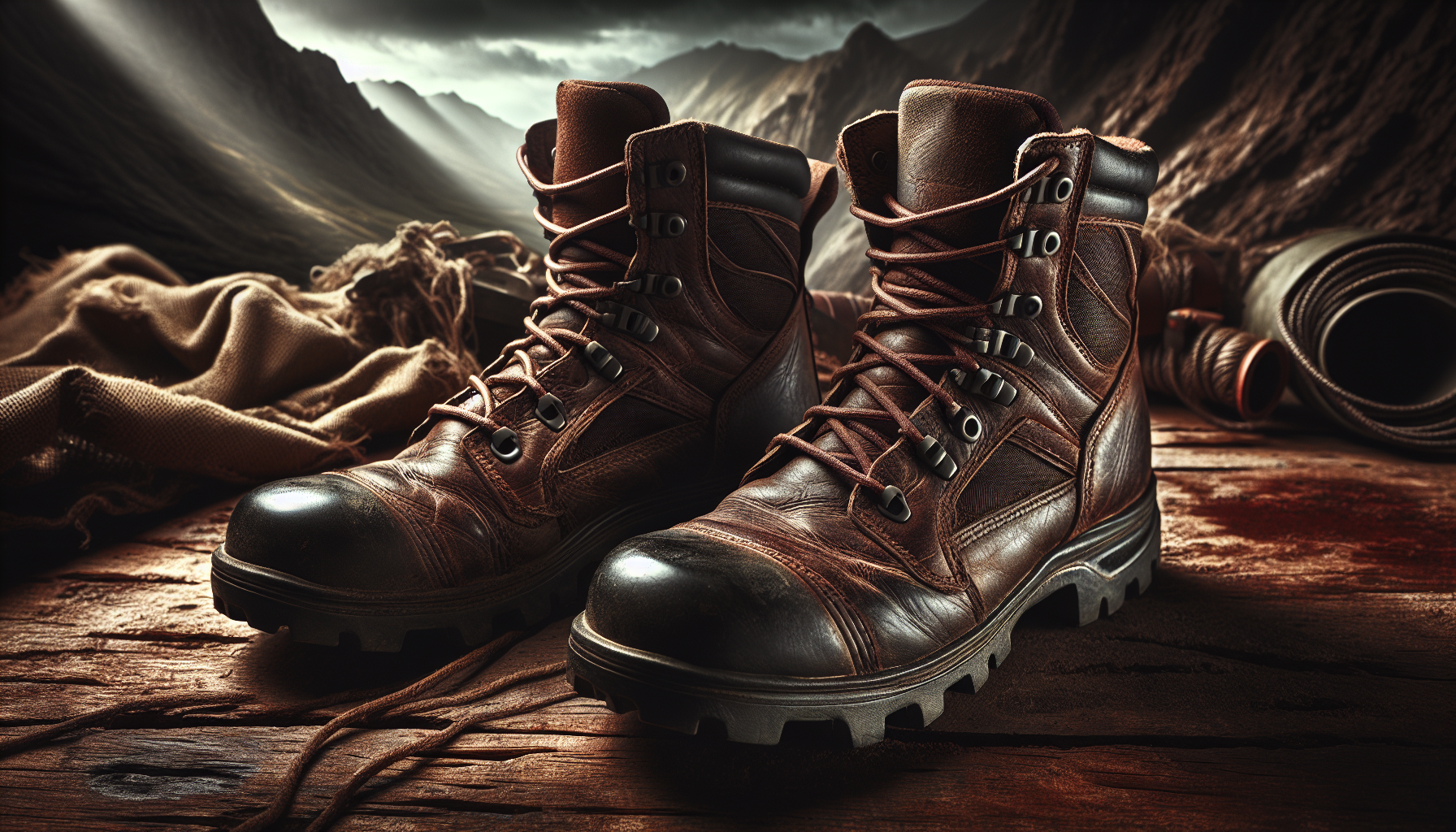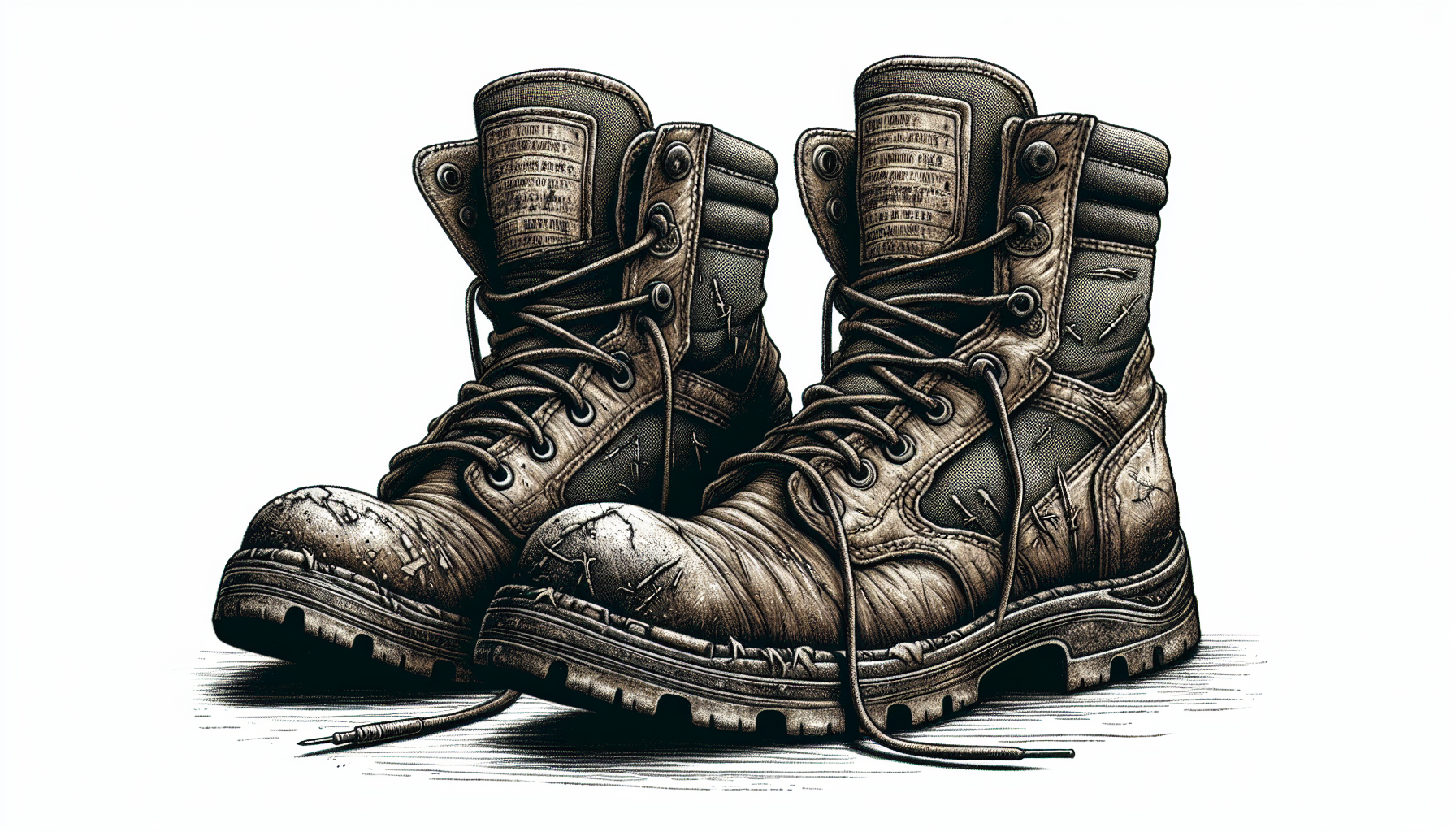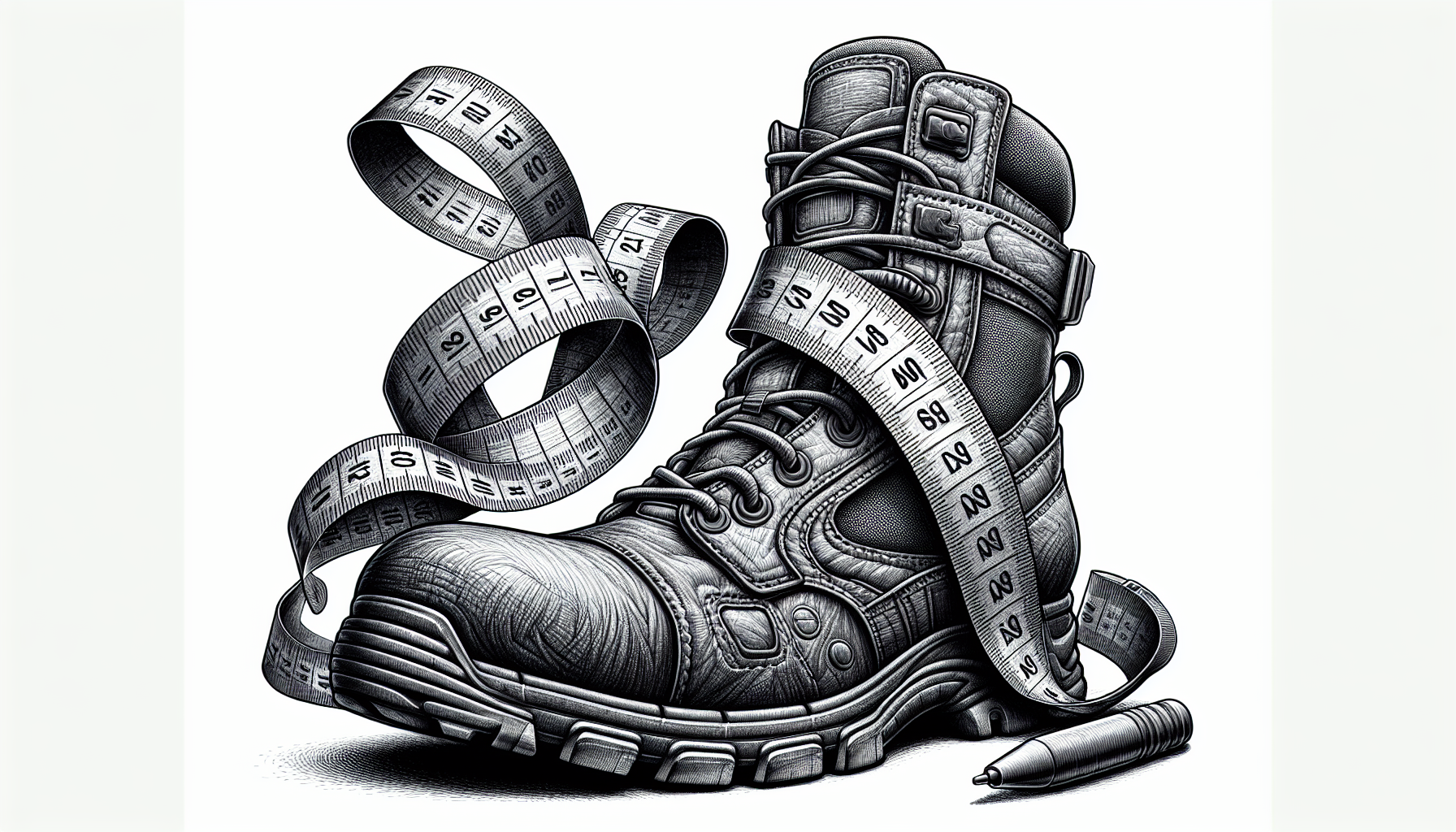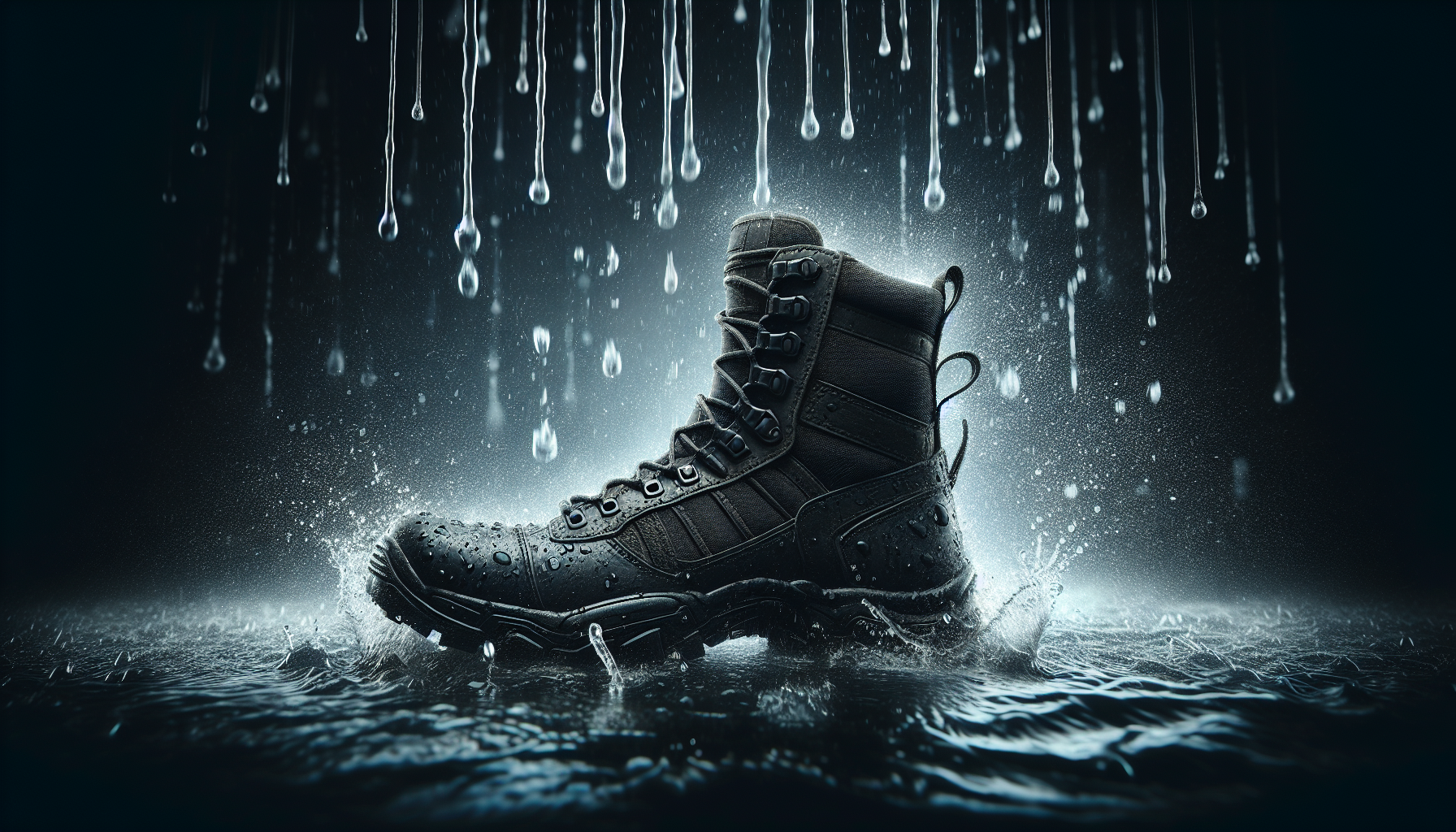The Ultimate Guide To Maintaining And Caring For Your Tactical Boots
The Ultimate Guide To Maintaining And Caring For Your Tactical Boots
Are you tired of constantly replacing your tactical boots due to wear and tear? Look no further, because we have the ultimate guide to help you maintain and care for your beloved footwear. Whether you rely on your boots for work, outdoor adventures, or just everyday wear, proper maintenance is crucial to extend their lifespan and maximize their performance. From cleaning and conditioning to storage tips, we’ve got you covered in this comprehensive guide. Say goodbye to constantly buying new boots and hello to a well-maintained and long-lasting pair that will accompany you on all your future endeavors.
The Ultimate Guide To Maintaining And Caring For Your Tactical Boots
Choosing the Right Tactical Boots
When it comes to choosing the right tactical boots, the first thing you need to consider is the purpose of use. Are you going to be using them for hiking, military operations, law enforcement, or simply for everyday wear? Different activities require different features in tactical boots, such as durability, waterproofing, ankle support, or stealth. So, make sure you identify the specific needs before making a purchase.
Once you know the purpose of use, it’s important to familiarize yourself with the different types of tactical boots available. The most common types are hiking boots, combat boots, and duty boots. Hiking boots offer excellent support and traction for rugged terrains, combat boots are designed for military operations with features like toe protection and insulation, and duty boots are suitable for law enforcement and security personnel with focus on comfort and versatility.
Lastly, when choosing tactical boots, ensure that you find the proper fit and size. Ill-fitting boots can cause discomfort, blisters, and even lead to injuries. Take accurate measurements of your feet and refer to the sizing charts provided by the manufacturers. Consider factors like width, arch support, and lacing systems that allow a snug fit. Remember, the right fit is crucial for both performance and comfort.
Cleaning and Maintenance
Proper cleaning and maintenance are essential to extend the lifespan of your tactical boots and ensure optimal performance. Here are some tips to keep your boots in top shape:
Regularly remove dirt and debris from your boots, especially after each use. This prevents buildup and maintains the integrity of the materials. Use a soft brush to gently remove any loose dirt.
For more thorough cleaning, use a mild soap or specialized boot cleaner. Make sure to follow the manufacturer’s instructions and avoid harsh chemicals that can damage the material.
Tough stains can be spot cleaned using a soft cloth or brush and mild soap. Rub gently in a circular motion until the stain is removed. Avoid excessive scrubbing as it can damage the surface.
After cleaning, let your boots dry thoroughly before storing them. Air drying is recommended, but avoid direct sunlight or heat sources as they can cause the materials to warp or crack.
To further protect and prolong the life of your boots, consider conditioning and waterproofing them. There are various products available specifically made for tactical boots. Follow the instructions on the product and apply it evenly to the surface of the boots. This will keep the leather or synthetic material supple and resistant to water damage.
Preventive Care
In addition to regular cleaning and maintenance, there are several preventive care measures you can take to ensure the longevity of your tactical boots:
Avoid exposing your boots to extreme temperatures, both hot and cold. Extreme heat can cause the glue to melt or the materials to warp, while extreme cold can cause the materials to become brittle and crack. If you know you will be in extreme conditions, consider purchasing boots specifically designed for those temperatures.
Properly store your boots when they are not in use. Keep them in a cool and dry place, away from direct sunlight or damp environments. Excessive moisture can lead to mold or mildew growth, while direct sunlight can fade the colors and weaken the materials.
Use boot trees or rolled-up newspaper to help maintain the shape of your boots. This not only keeps them looking nice but also prevents creases and wrinkles that can lead to discomfort or premature wear.
Rotate wearing different pairs of tactical boots if you have multiple options. This allows each pair to rest and recover, preventing excessive wear and extending their overall lifespan. Plus, it gives you the opportunity to match the specific boots to different activities or uniforms.
Regularly inspect your boots for any signs of damage, such as loose seams, detached soles, or worn-out components. Addressing these issues promptly can prevent further damage and potentially save you from expensive repairs or replacements in the future. If you notice any damage, consult with a professional cobbler or contact the manufacturer for advice on appropriate repairs.
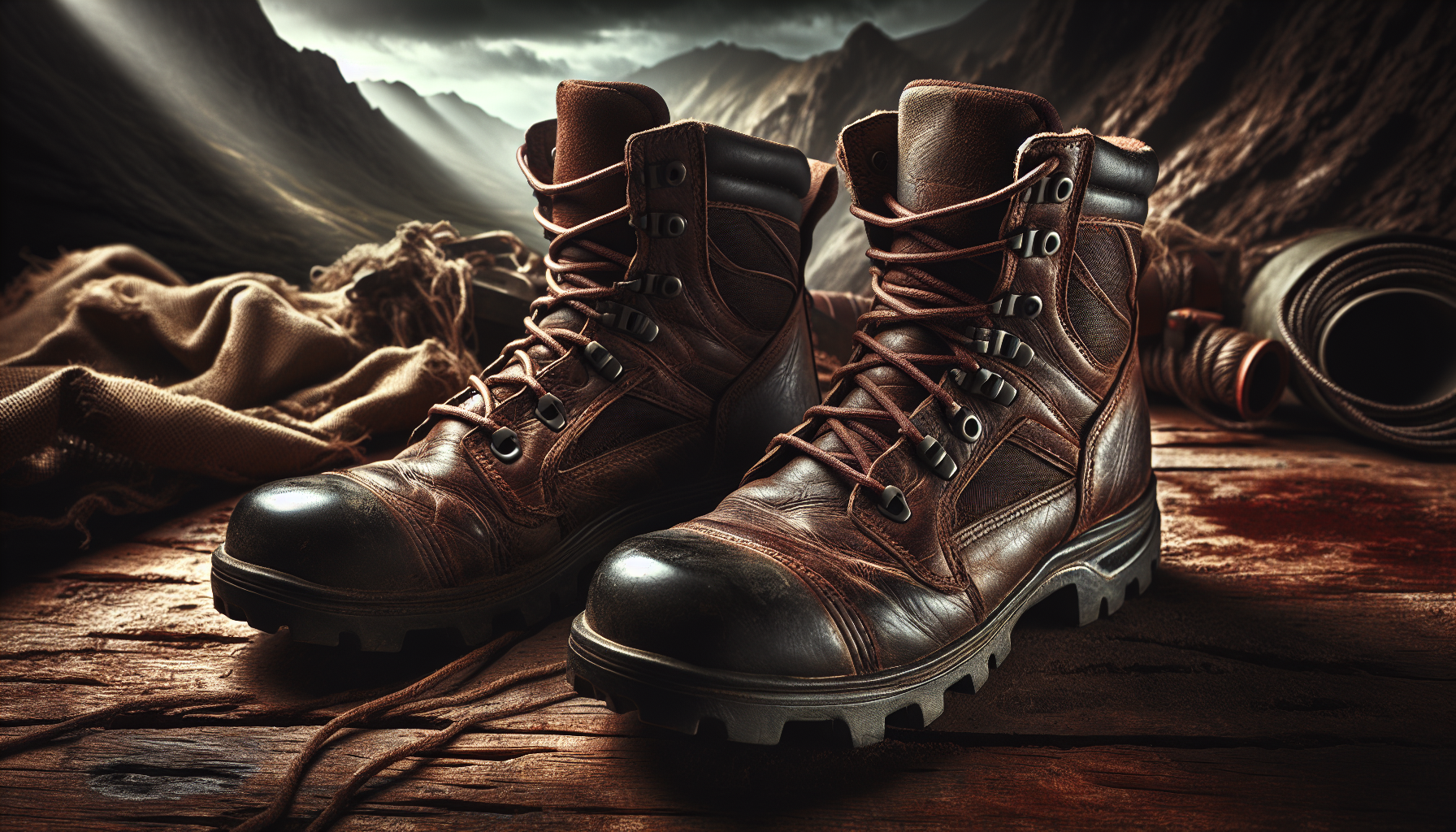
Lacing Techniques for Optimal Comfort and Support
Proper lacing techniques can significantly enhance the comfort and support provided by your tactical boots. Here are some popular lacing techniques to consider:
Basic Overhand Lacing: This is the traditional lacing method that most people are familiar with. It provides a secure fit and is suitable for most activities. Simply cross the laces over each other and loop them through the eyelets, making sure to tighten them evenly.
Heel Lock Lacing: This technique is especially useful for those who experience heel slippage or want extra ankle support. After completing the basic overhand lacing, create an extra loop with the laces at the top two eyelets, then cross them over and feed them through the loops on the opposite side. Finally, tighten the laces to secure the heel and prevent it from moving.
Runner’s Loop Lacing: This method is ideal for individuals with high arches or foot instep pain. Start by creating a loop at the bottom eyelet on each side of the boot. Then, thread the laces through these loops before proceeding with the basic overhand lacing. The added loops provide extra space and alleviate pressure on the instep.
Ladder Lacing for Secure Fit: Ladder lacing is great for achieving a secure fit without placing excessive pressure on the top of the foot. Begin by lacing the boots normally until the second set of eyelets from the top. Then, instead of crossing the laces over, thread them straight up through the next set of eyelets. Continue this pattern until you reach the top, where you can tie a knot or create a double knot to secure the laces.
Try out different lacing techniques to find the one that suits you best. Remember, the right lacing technique can provide added comfort, support, and stability throughout your activities.
Breaking In Your Tactical Boots
New tactical boots often require a breaking-in period to ensure maximum comfort and minimize the risk of blisters or foot pain. Here are some tips for breaking in your boots:
Wear your new boots around the house before taking them on a long hike or demanding activity. This allows your feet to adjust to the boots gradually and identify any potential discomfort or hot spots.
Gradually increase the wearing time of your boots. Start with shorter durations, such as a couple of hours a day, then gradually extend the duration each time you wear them. This gives your feet time to adapt and prevents excessive strain on your muscles and joints.
Pay attention to the problem areas during the break-in process. If you notice any discomfort or pressure points, you can take specific measures to alleviate them. For example, you can use moleskin pads or specialized gel inserts to cushion specific areas.
Utilize moisture treatment if your boots are made of leather. Applying a small amount of water or leather conditioner to tight or stubborn areas can help soften and stretch the material, providing a more comfortable fit.
Remember, breaking in your tactical boots is not a one-time event. Even after the initial break-in period, continue to wear them regularly to maintain comfort and prevent the materials from stiffening or molding to the wrong shape.
Protection and Durability
To maximize the protection and durability of your tactical boots, consider the following tips:
Apply protective coatings to your boots to enhance their resistance to water, stains, and scratches. There are various products available such as waterproof sprays or waxes specifically designed for tactical boots. Apply the coating evenly and according to the manufacturer’s instructions to provide an extra layer of protection.
Consider using toe and heel caps for additional reinforcement. These protective caps can prevent scuffs, cracks, and abrasions to the most vulnerable areas of your boots. They are particularly beneficial if you frequently encounter rough terrains or engage in activities that may cause impact or compression injuries.
Upgrade your insoles to enhance cushioning and comfort. The standard insoles that come with your tactical boots may not provide sufficient support for your specific needs. Replace them with high-quality insoles that offer superior shock absorption and arch support. This will not only increase your comfort during activities but also reduce the risk of foot fatigue or injuries.
Regularly inspect your boots for worn-out components such as laces, eyelets, or soles. These components can greatly affect the overall performance and durability of your boots. Replace them promptly to maintain optimal functionality and prevent further damage.
Invest in proper socks and inserts that complement your boots. High-quality moisture-wicking socks can help keep your feet dry and prevent blisters, while specialized inserts can provide additional cushioning and support. Choose socks with reinforced heels and toes for added durability, and select inserts with shock-absorbing properties if you engage in high-impact activities.
By implementing these protective measures, you can enhance the longevity and overall durability of your tactical boots, ensuring they perform at their best for a longer period.
Dealing with Odor and Moisture
Odor and moisture can be persistent problems when it comes to tactical boots. To keep your boots fresh and comfortable, consider the following tips:
Allow sufficient air circulation for your boots. Whenever possible, remove the insoles and loosen the laces to promote air flow. If feasible, give your boots a break and let them air out overnight or between use. This helps to prevent the buildup of sweat and moisture, reducing the likelihood of odor and fungal growth.
Use odor-eliminating sprays or powders specifically designed for footwear. These products can help neutralize unpleasant odors and keep your boots smelling fresh. Follow the instructions on the product and apply it to the interior of your boots as needed.
Utilize moisture-wicking socks to keep your feet dry. Moisture-wicking socks are designed to draw moisture away from your skin and disperse it, preventing the accumulation of moisture inside your boots. Opt for socks made of breathable materials such as merino wool or synthetic blends with moisture-wicking technology.
After each use, make sure to dry your boots thoroughly before storing them. Remove any moisture by patting them down with a towel and let them air dry in a well-ventilated area. Avoid using direct heat sources like heaters or hairdryers, as the excessive heat can damage the materials.
Store your boots in a dry and well-ventilated area. Avoid storing them in enclosed spaces or damp environments, as this can lead to the growth of mold or mildew. Consider using a boot rack or an open shelf that allows air to circulate freely around the boots.
By following these practices, you can effectively combat odor and moisture, keeping your tactical boots fresh, comfortable, and free from potential health risks.
Handling Wet and Rainy Conditions
Tactical boots are often subjected to wet and rainy conditions, which can pose a challenge if not properly managed. Here’s how you can protect your boots and ensure they perform well in wet environments:
Pre-treat your boots with waterproofing agents. Before exposure to water, apply a waterproofing solution or spray designed specifically for tactical boots. These products create a barrier that repels water, preventing it from entering and damaging the materials. Follow the instructions provided by the manufacturer for best results.
If your boots get wet, it’s crucial to dry them thoroughly as soon as possible. Remove any excess moisture with a towel or absorbent material. Then, let them air dry in a well-ventilated area away from direct sunlight or heat sources. Stuffing your boots with newspaper can help absorb moisture and speed up the drying process.
Inserting newspaper into your boots also helps them retain their shape while drying. The newspaper absorbs excess moisture and prevents the boots from collapsing or losing their form. Replace the newspaper as needed until the boots are completely dry.
Avoid using direct heat sources to dry your boots, as excessive heat can cause the materials to warp or crack. Instead, opt for air drying and be patient. Rushing the process can compromise the integrity of the boots and reduce their lifespan.
Regularly inspect your boots for signs of damage, especially after exposure to water. Check for loose seams, detached soles, or any other issues that may have arisen from getting wet. Address these problems promptly to prevent further damage and potential performance issues.
By following these tips, you can confidently navigate wet and rainy conditions, knowing that your tactical boots are protected and will continue to perform at their best.
Repairing and Replacing Components
Over time, components of your tactical boots may wear out or become damaged. Here’s how you can address common boot problems and keep your boots in optimal condition:
Identify common boot problems such as worn-out laces, broken eyelets, or loose seams. Regularly inspect your boots for signs of wear and tear, allowing you to address issues promptly and prevent further damage.
Replacing or repairing laces is a simple and cost-effective solution. Laces can often become frayed or lose their structural integrity due to repeated use. Invest in quality replacement laces that match the original length and style to ensure a secure fit.
Resoling your boots can extend their lifespan and restore traction. Over time, the soles of your boots may wear down, reducing their grip and compromising their performance. Consult with a professional cobbler to determine if resoling is possible and appropriate for your boots.
Reinforce loose seams and stitching to prevent further unraveling. If you notice any loose threads or weakened stitching, use a strong needle and durable thread to reinforce the affected areas. This will help prevent the damage from spreading and preserve the overall integrity of the boots.
Consulting a professional cobbler is always an option if you’re unsure about repairing certain boot components yourself. Cobblers have the expertise and tools to handle complex repairs and provide recommendations on maintaining the condition of your boots. Seeking their assistance can ensure that your repairs are done properly and effectively, preventing further damage or potential safety hazards.
By addressing boot problems promptly and taking appropriate repair measures, you can prolong the lifespan of your tactical boots and continue to rely on them for years to come.
Long-Term Storage
Proper storage is crucial for maintaining the condition of your tactical boots during extended periods of non-use. Here are some tips for long-term storage:
Clean and dry your boots thoroughly before storing them. Use a soft brush or cloth to remove any dirt or debris, and allow them to air dry completely. Moisture left in the boots can lead to mold or mildew growth, causing extensive damage during storage.
Pack your boots with acid-free tissue paper to help them retain their shape. Acid-free tissue paper is gentle on the materials and prevents creasing or deformation. Stuff the boots loosely, ensuring each boot is filled adequately without excessive pressure.
Store your boots in a cool and dry environment. Avoid areas with high humidity or extreme temperature fluctuations, as they can degrade the materials of the boots. Consider using a breathable shoe bag or a storage box that allows air circulation to help prevent moisture buildup.
Avoid placing heavy objects on top of your stored boots, as this can deform or crush them. Opt for storing them in a location where they won’t be subjected to unnecessary pressure or weight.
Regularly inspect your stored boots for signs of mold or mildew. If you notice any discoloration, musty odors, or visible signs of growth, take immediate action to address the issue. Cleaning, disinfecting, and allowing the boots to dry in a well-ventilated area can help remove mold or mildew and prevent further damage.
By following these long-term storage practices, you can ensure that your tactical boots remain in excellent condition even during extended periods of non-use. When you’re ready to use them again, they’ll be clean, well-maintained, and ready to perform.

